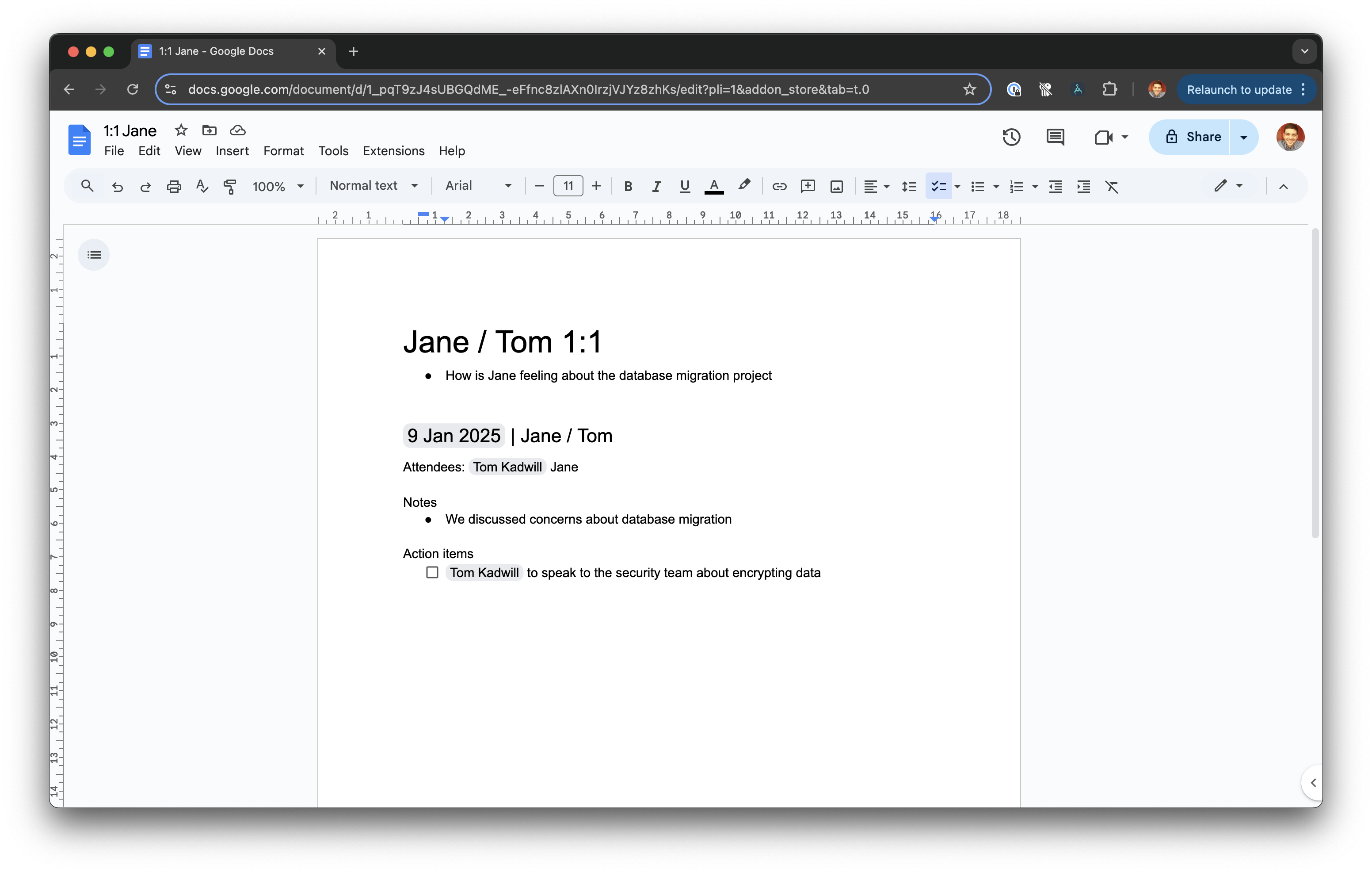Running Great 1:1 Meetings
This month I challenged myself to run better 1:1s. I’ve been in the industry for 13 years so I’ve done a lot of 1:1s. Either as a manger and with my manager. But lately I felt I could do better. My 1:1s were often stilted and unproductive. I felt I was just going through the motions. Bad 1:1s are a waste of time for everyone and cause people to feel unsupported.
This month I tried to improve. I interviewed friends in the industry and consumed some great content. Here’s what I learned:
1. Prepare good questions
Ideally, 1:1 meetings should be driven by the report. But, in my experience, most people do not prepare and are not comfortable driving their 1:1s. If that’s the case, the manager must be proactive.
In preparation, I spend a little time before each 1:1 thinking about questions I’d like to ask. Here are some example:
- What is worrying you most at the moment?
- Did you see the bit about AWS lambdas at the engineering all hands on tuesday?
- Do you think there’s anything I’m missing about our current projects? Anything you think I don’t understand fully?
- Have you spent much time pairing with Ben? If so, how was it?
These questions are useful to fall back on when conversation isn’t flowing naturally.
Preparing questions improved my 1:1s significantly. It shows the person I care and I’ve thoughts about them and I’ve put some effort into the meeting, so they should too.
2. Keep notes
In the past I haven’t taken notes in 1:1s. It’s extra effort and I felt it would distract me from the conversation. My research told me I was wrong so I experimented with keeping notes.
I found note taking helps me focus on what I’m hearing and retain information. It also demonstrates that information exchanged in 1:1s is important. Meeting aren’t jollies where we chat and forget about it. Keeping notes allows me to refer back and record actions.
To minimise the overhead, I’m using a very light weight Google Doc which looks like this:

Google Docs has a nice feature which auto populates the meeting. I typically do this 5 mins before the meeting whilst thinking about questions to ask. I add those questions at the top and fill out meeting notes during the meeting.
3. Circle back to previous 1:1s
Having a note system in place allows me to circle back. I try not to be too ridged about it but make an effort to review past 1:1 notes & actions.
1:1s have two main benefits - strengthening relationships & making improvements. Following up on actions is how we make improvements. It also builds trust by demonstrating that things raised during 1:1s actually get addressed.
4. Enjoy 1:1s!
I never dreaded 1:1s but I can’t say I was excited about them. Especially when I was busy I thought time could be better spent elsewhere. I’m sure that energy was apparent to the other person.
To improve, I made an effort to look forward to each 1:1 as an opportunity to connect with the person and learn. I tried to listen attentively and bring positive energy.
Harry Stebbings, podcaster and VC has a quote that’s a little over the top but helps put my in the right frame of mind: “go into every meeting saying, I want this to be that person’s best meeting, and I’m gonna fucking bring it”.
I’m enjoying 1:1s more because I’m actually learning things about the project and uncovering things for further investigation.
Results of the experiment
After a month, here are the results of my experiment:
- I enjoy 1:1s more (and think my reports do too).
- 1:1s feel less stilted and I’m improving relationships with team members.
- I’m learning more about our projects & getting useful feedback.
- I’m having deep conversations and actually solving problems. 1:1s have become productive! One afternoon I had back to back 1:1s and discussed our release process, in detail, with both engineers. I came away with an action plan for how to improve things.